50 Years of Innovation in Video Game Console Designs
Over the last 50 years, gaming has dropped the “not-too-serious” tag and matured into a booming $159.3 billion industry(1). To celebrate the dawn of the 9th gen...
Over the last 50 years, gaming has dropped the “not-too-serious” tag and matured into a booming $159.3 billion industry(1). To celebrate the dawn of the 9th generation of consoles—and satisfy our geek hearts—we take a look back at the history of video game consoles and the evolution of the user experience (UX) we all love them for.
🥚 What was the first video game console?
👤 Who created it and how successful was it?
🕹 How has the user experience changed over time?
⭐️ What made some consoles more popular than others?
🖥 Are PCs really better than consoles?
⚔️ What were the Console Wars and who won them?
👾 Insert coin to continue... If you want to learn more about the history of gaming and its ties to productivity, check our previous articles when you're done reading:
🥚 The First Generation: Where it All Began
“When you get to be over 80, your coordination goes to hell and a half.”
Ralph H. Baer
Ralph Baer and The “Brown Box” (1968)
After William Higinbotham’s original Tennis for Two (1958), we had to wait ten years for another ilk of inventors to (re)explore the concept of video games.
In 1968, a team of engineers at Sanders Associates, Inc. led by Ralph Baer developed an inconspicuous device—affectionately called the “Brown Box”—that hooked up to a standard TV set and run several sport-themed “TV games” like ping pong or volleyball.
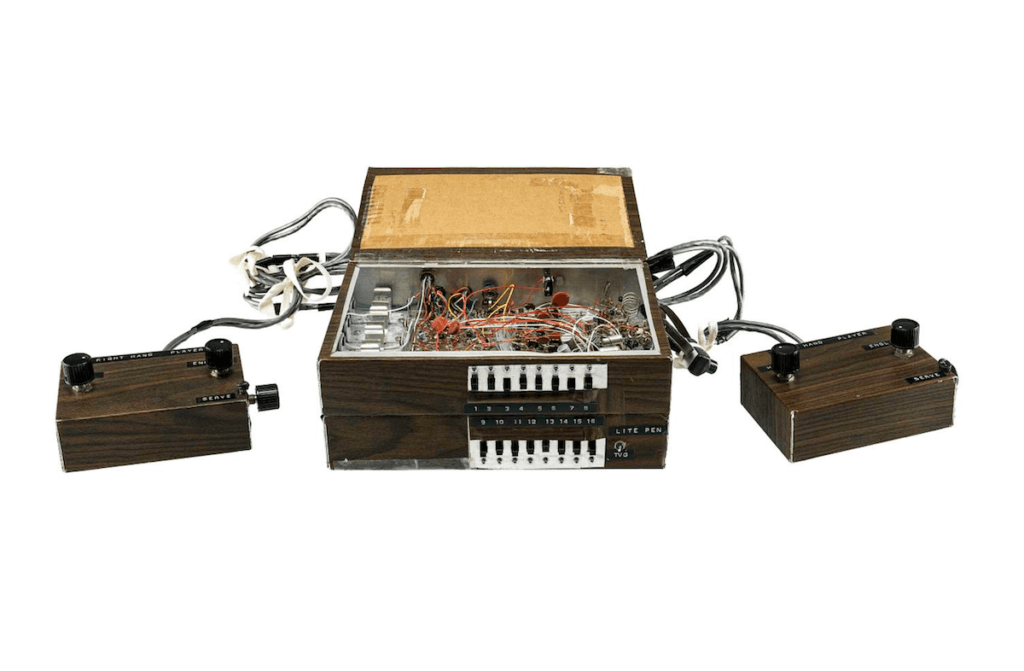
As Baer recalled in a Gamasutra interview:
"So the idea came to me: ‘Hey, maybe we ought to build something into a television set.’ I don't know that I thought about it as a game, but as something to fool with and to give you something to do with the television set other than watch stupid network programs.”(2)
🕹 Gaming UX Trivia #1: While only a prototype, the “Brown Box” came equipped with two controllers for multiplayer gameplay and several revolutionary add-ons like the “light-gun” Nintendo would popularize many years later.
Magnavox Odyssey (1972)
In 1972, an electronics manufacturer Magnavox licensed Baer’s tech and developed Magnavox Odyssey, the first commercial device in the history of video game consoles.
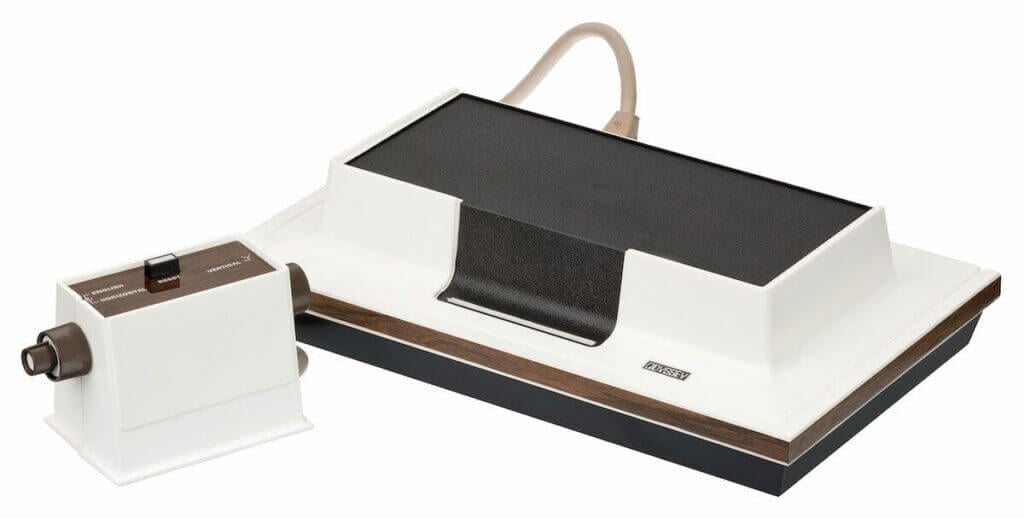
Magnavox Odyssey via Wikipedia(4)
🕹 Gaming UX Trivia #2: Baer’s “Brown Box” required users to press intricate combinations of switches to select one of the games loaded into the device. Magnavox improved the user experience by introducing swappable cartridges, a gold standard that would make console gaming so appealing for years to come.
The release of Magnavox Odyssey—with lifetime sales of 350,000 units—marked the beginning of the 1st generation of video game consoles.
☄️ The Second Generation: Rise and Fall
“We didn't do a square ball in 'Pong' because we thought it was cool. We did it because that was all we could do.”
Nolan Bushnell, Co-founder and former CEO of Atari Interactive, Inc.
Atari VCS/2600 (1977)
In 1977, Atari—originally an arcade gaming company—released Atari Video Computer System (VCS). The device launched with 9 games stored on swappable cartridges and featured a completely new controller design.
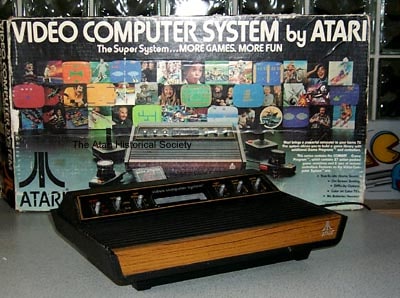
Atari VCS/2600 via the Atari Museum(5)
🕹 Gaming UX Trivia #3: VCS’s elegant joysticks were a significant improvement over the bulky and unwieldy design of Odyssey controllers. Atari’s console also included companion “paddles” with potentiometers for extra control.
VCS, later renamed to Atari 2600, expanded the sport-themed catalog of games and hit the market with now-classic titles like Combat, Asteroids, Pole Position, and River Raid.
Atari wasn’t the only company that wanted a share in the new market. Sometime after VCS’s debut, two other competitors, Coleco and Mattel, released their own devices.
Intellivision (1979)
Intellivision, which was developed by a toy manufacturer Mattel—hit the market two years after VCS. Most notably, the device featured a pair of remote-like controllers and a revolutionary 16-bit microprocessor which was well ahead of its time.
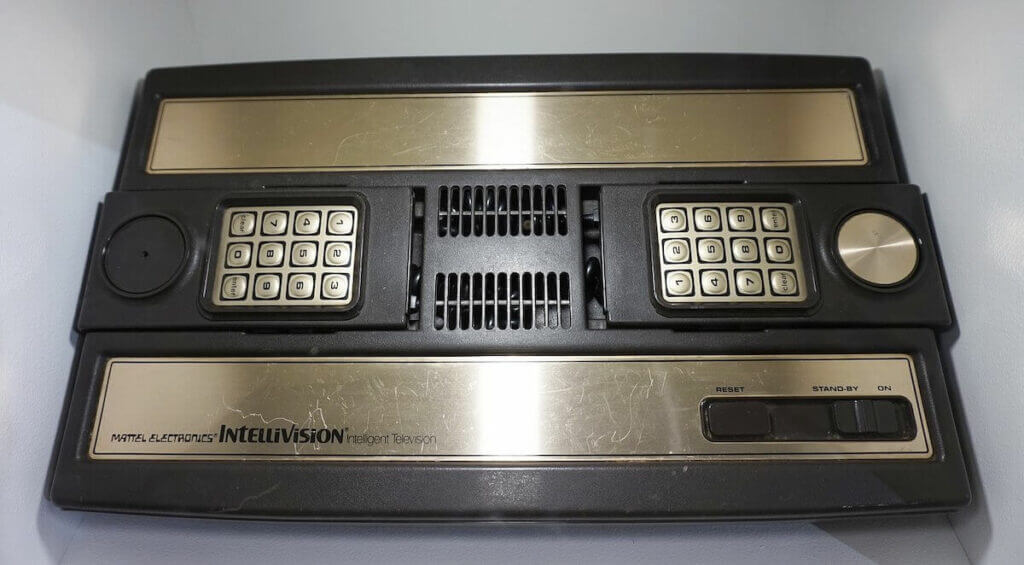
Intellivision via Wikipedia(6)
Following solid sales figures and several revisions of the device, the company fell into financial troubles and the IP was sold ultimately ending Intellivision’s life.
ColecoVision (1982)
Developed by a former leather goods company Coleco, ColecoVision was a black, rectangular device equipped with two, remote-like controllers. Interestingly enough, the system used a desktop-grade, 8-bit Zilog Z80A microprocessor.
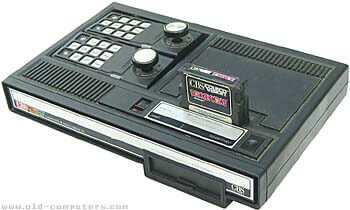
ColecoVision with two controllers via Old-Computers.com(7)
🕹 Gaming UX Trivia #4: ColecoVision introduced several expansion modules like the ADAM personal-computer kit, a roller controller (trackball) or an Atari 2600 adapter which was really “a nearly complete Atari game system.”(8)
Although the fledgling video game market was picking up speed, the emergence of personal computing, among other reasons, led to its collapse.
The Video Game Crash of 1983 killed off the momentum and quenched the potential success of new, up-and-coming devices like Atari 5200 and Magnavox Odyssey 2.
⚔️ The Third Generation: New Players Enter the Arena
“Videogames weren’t just for kids; they were for anyone who wanted to feel like a kid. Anyone who missed the freedom and innocence that comes with endless wonder.”
Blake J. Harris, Console Wars
Famicon/NES (1983/1985)
In the same year the U.S. gaming market halted, the Japanese gaming industry began to flourish, most notably with the release of Nintendo’s Famicon on July 15, 1983.

Famicon (JPN) vs. NES (US)(9)
Using a tested recipe of its predecessors, Nintendo equipped Famicon with two permanently attached controllers and swappable cartridges. With solid games to match, the system quickly captured the hearts of Japanese gamers.
In October 1985, redesigned and rebranded as Nintendo Entertainment System (NES), Nintendo’s console launched in the U.S. becoming one of the most successful devices in the history of video game consoles.
SEGA Mark III/Master System (1985/1986)*
In 1985, a video game developer SEGA entered the Japanese market with Mark III, an 8-bit console that was meant to compete with the widely popular Famicon.
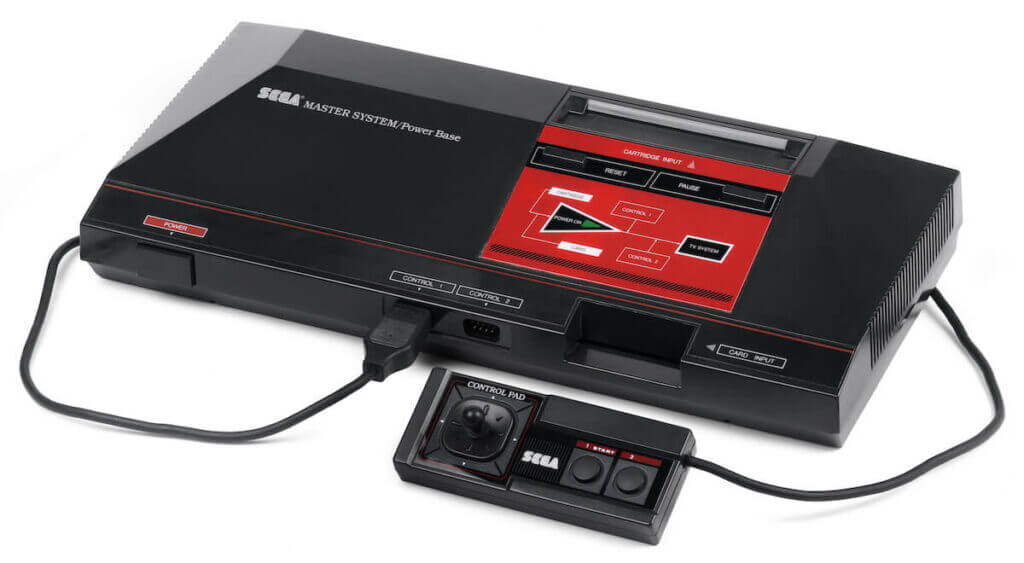
Sega Master System (US) via Wikipedia(10)
Although SEGA’s device was more powerful than NES, it didn’t really have the games to show its potential. In 1986, SEGA redesigned the console and released it in the U.S. as the Master System where it ended up as a runner-up to NES.
🕹 Gaming UX Trivia #5: The Master System wasn’t revolutionary in its own right but it attempted innovation with a “card port” which allowed users to hook up additional peripherals. The lineup of add-ons included the SegaScope 3D glasses that took a handful of games into a mock third dimension.
🌋 The Fourth Generation: 16-Bit Worlds Explode
“You were either a Sega person or a Nintendo person; you couldn’t choose both.”
Blake J. Harris, Console Wars
SEGA Mega Drive/Genesis (1988/1989)
In 1988, SEGA made a grand comeback with Mega Drive. The new console was meant to be SEGA’s trump card in a grapple with Nintendo over the U.S./Japanese markets.
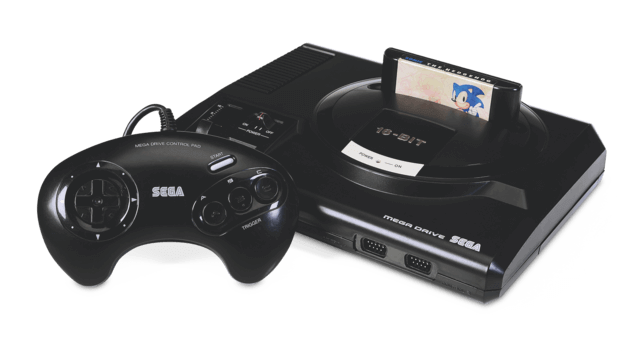
SEGA Mega Drive/Genesis via SEGA Fandom(11)
Mega Drive—later renamed to Genesis—was the first true 16-bit system, a quality that gave it a substantial advantage over the 8-bit NES. With a powerful console and Sonic the Hedgehog as its mascot, SEGA quickly captured 60 percent of the U.S. market share.
🕹 Gaming UX Trivia #6: Although Mega Drive’s 16-bit internals made the headlines in 1988/9, it wasn’t the first console to explore the next-gen realm. Earlier devices like TurboGrafx-16 used similar albeit limited technology.
Super Famicon/SNES (1990/1991)
It wasn’t long before Nintendo entered the 16-bit space with Super Famicon (1990) in Japan and Super Nintendo Entertainment System (SNES) in the U.S. one year later.
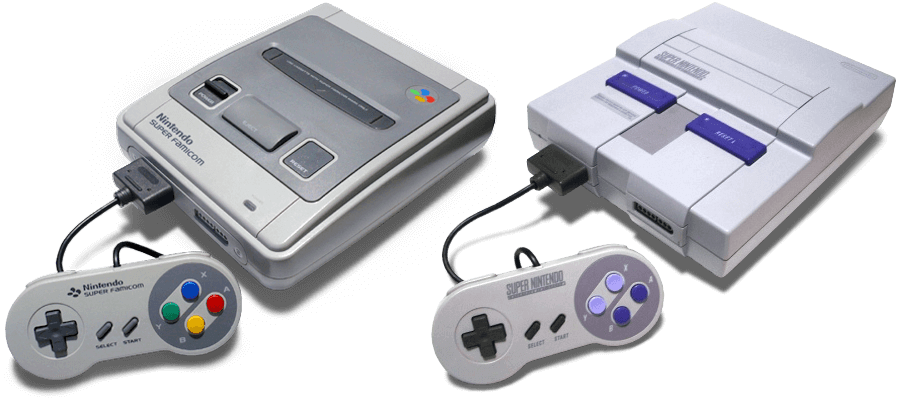
Super Famicon vs SNES via vgcollect.com(12)
Famicon/SNES housed 16-bit internals, two redesigned, detachable controllers, a 32K color palette—it could display 256 colors at the same time—and sophisticated cartridges, some including SRAM for saving game state.
🕹 Gaming UX Trivia #7: A 2D console at heart, SNES featured an innovative Mode 7 display mode that simulated 3D graphics.
Although SNES—like Playstation 3 many years later—was notoriously difficult to develop, it built its heritage on a rooster of exceptional games like Super Mario World, Zelda franchise, Dragon Quest, Final Fantasy, and Street Fighter.
⚡️ The Fifth Generation: The Dawn of a New Era
“Not only would Sony be entering the console market on their own, but they now had the advantage of knowing exactly what SEGA had up its sleeve.”
Blake J. Harris, Console Wars
Sony Playstation (1994/1995)
On December 3, 1994, Sony—a newbie in the console market—released Playstation. Compared to its 16-bit competition, the new console boasted powerful internals that could display full 3D graphics and generate a whooping 360,000 polygons per second.
🕹 Gaming UX Trivia #8: Playstation (PSX) was the first system in the history of video game consoles that, after several revisions, introduced a vibrating controller—the Dual Shock. On top of two analog sticks, Dual Shock housed vibrating motors that reacted to in-game events.

Playstation (PSX) with a Dual Shock controller via Wikipedia(13)
As Sony proudly recalls on its website:
“The game-changing PlayStation sported a sleek design and CD format, meaning games were bigger, 3D-capable and with superior sound to what came before it. Within a decade, PlayStation became the first games console in history to sell over 100 million units worldwide.”(14)
Apart from beefy specs, the original Playstation boasted an all-star lineup of games like Ridge Racer, Crash Bandicoot, Tekken, Resident Evil, Tomb Raider, Metal Gear Solid, MediEvil, or Spyro, many of which became instant classics.
SEGA Saturn(1994/1995)
A few months before Sony made their grand entrance, SEGA had been prepping to debut their newest Saturn console. Although Saturn was originally a 2D system, SEGA decided to add 3D capabilities after Sony’s bold claims about the power of PSX.
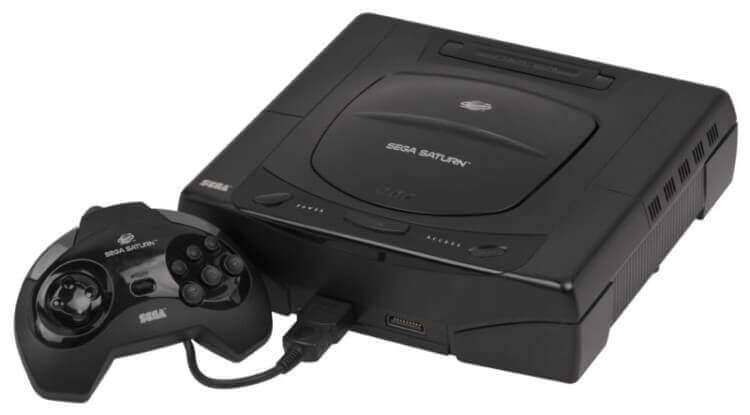
SEGA Saturn via Computing History(14)
In a 2018 interview, former SEGA president and R&D director Hideki Sato recalled:
“The Saturn actually had just one CPU at the beginning. Then Sony appeared with its polygon-based PlayStation. When I was first designing the Saturn architecture, I was focused on sprite graphics, which had been the primary graphics up to that point. So I decided to go with polygons (due to the PlayStation).”(15)
SEGA outrun Sony in the race to Japanese and U.S. markets but Saturn faced a fair share of hiccups. On top of its high price and lack of solid games to sell the system, the console didn’t even get a new release of fans’ favorite Sonic the Hedgehog.
Nintendo 64 (1996)
Two years after Saturn’s debut in Japan, Nintendo came up with its own 3D console, Nintendo 64 (N64). The system, codenamed “Project Reality,” was the last device from the Big N that used cartridges for storing games.
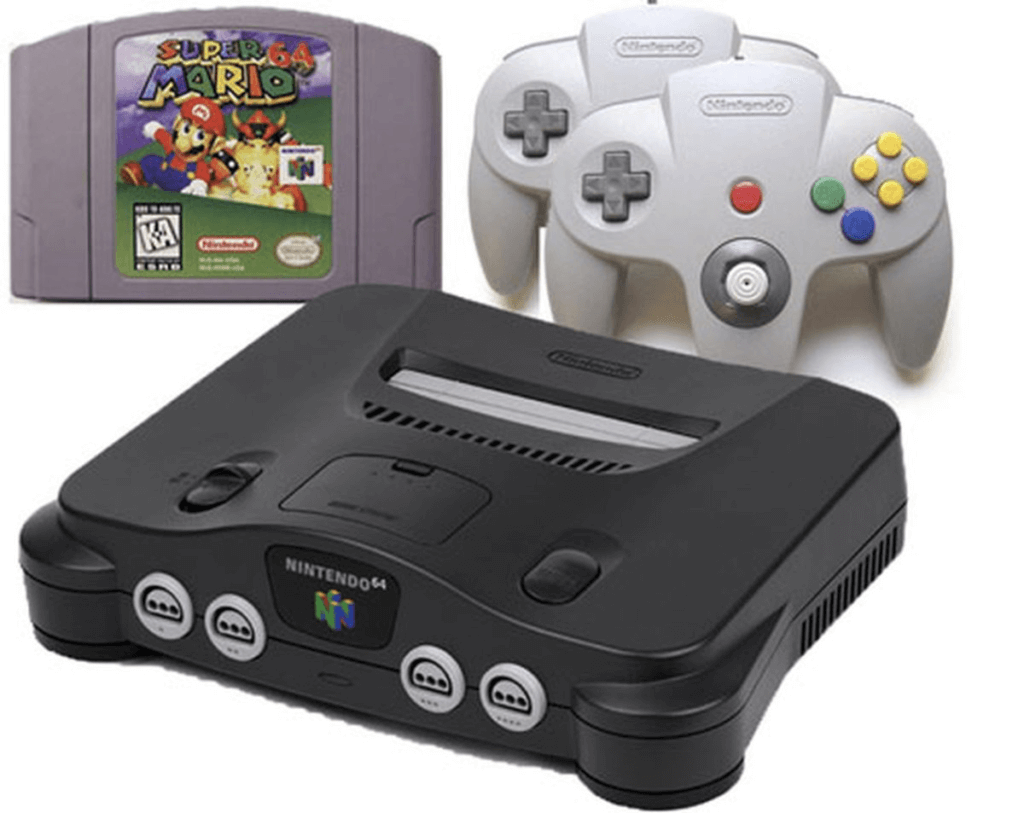
Nintendo 64 by Nintendo via VentureBeat(17)
🕹 Gaming UX Trivia #9: One of the most notable design elements of N64 was its controller. Shaped like a beefed-up letter “M,” it allowed multiple holding positions, including using two controllers simultaneously, one for each hand.
Despite using outdated and expensive cartridges that couldn’t hold a candle to DVD’s, N64 developers managed to deliver many instant classics like Super Mario 64, GoldenEye 007, Conker’s Bad Fur Day, or The Legend of Zelda: Ocarina of Time.
✊ The Sixth Generation: Big Five
"I am not a huge gamer. My son knows a LOT more than I do about what is cool on Xbox [...]”
Bill Gates
SEGA Dreamcast (1998/1999)
The sixth generation in the history of video game consoles was by no means revolutionary. But it introduced some new names to the gaming business.
On November 27, 1998, SEGA made their last push with their most powerful console —the Dreamcast. One look at the new device proved that SEGA learned some design lessons—perhaps from Nintendo—and gave Dreamcast a more “likable” attire.
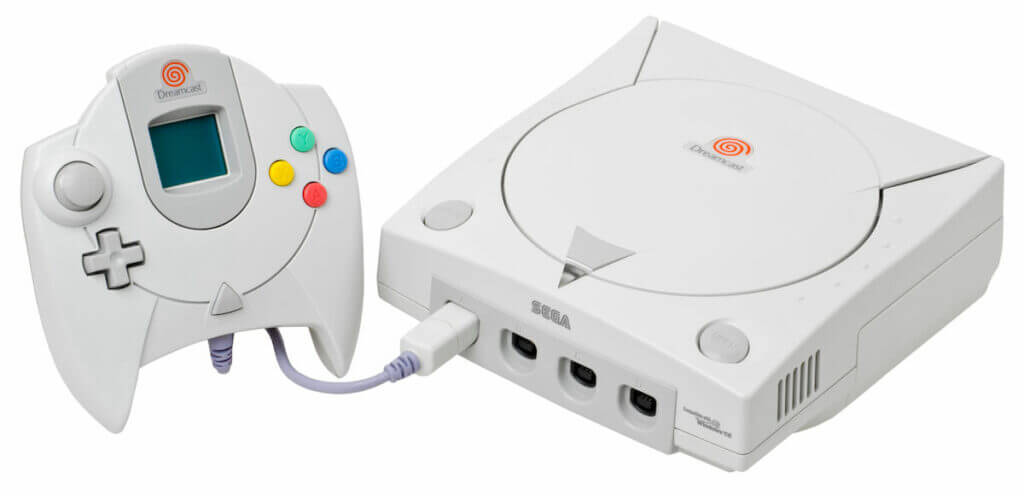
SEGA Dreamcast via Wikipedia.(18)
After the interesting but underpowered Saturn, SEGA poured all its resources into the development of Dreamcast, and it showed. The first 128-bit console on the market, it packed specs like internet connectivity and VGA capabilities.
🕹 Gaming UX Trivia #10: SEGA made a lasting mark on the history of video game consoles by embedding a novelty, see-through slot at the top of the Dreamcast controller. The port was designed for connecting several expansions, including the Visual Memory Unit (VMU), a memory card/auxiliary screen.
Potent hardware and innovative features could only get Dreamcast so far. Facing strong competition, dwindling sales, and soaring losses, Dreamcast ended up as the last SEGA device in the history of video games.
Sony Playstation 2 (2000)
After a small revolution on the part of PSX, Sony wasn’t going to let their virgin success go to waste. Soon after Dreamcast’s U.S. debut, the company followed up with Playstation 2, a system that would become the best-selling console of all time.
🕹 Gaming UX Trivia #11: At some point, Sony developed a conversion kit that let users turn their PS2s into fully-fledged Linux machines. The kit included computer peripherals and targeted amateur programmers who wanted to develop games and software for the system.
Like its predecessor, PS2 received a terrific lineup of system-sellers like Grand Theft Auto, Metal Gear Solid 2, Vice City, Gran Turismo, Silent Hill, Tekken Tag Tournament, Shadow of the Colossus, God of War, and ICO.
GameCube (2001)
2001 was an important year in Big N’s history. On September 14, Nintendo released GameCube (a.k.a. “Dolphin”), its first console that used mini discs instead of cartridges.
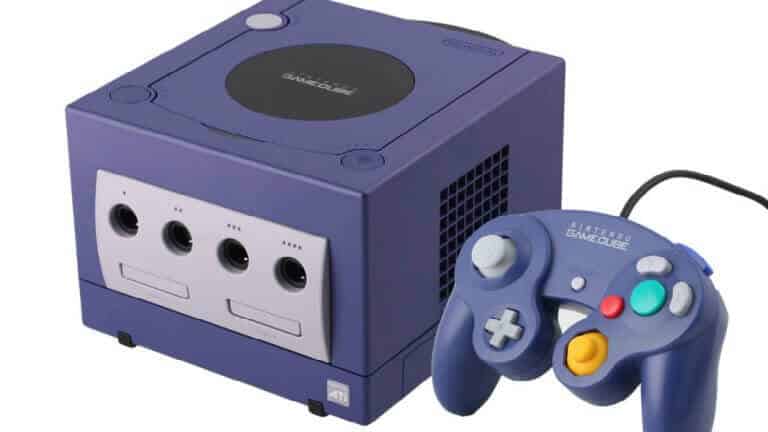
GameCube via Den of Geek(19)
While GameCube sported solid specs, four controller ports, and a gamepad design that built on Nintendo 64's heritage, the console didn't make a great splash.
Some attribute GameCubes’s lackluster performance to proprietary mini discs that had a much smaller capacity than Playstation 2 DVDs. On top of that, the system had a scant game library with only a handful of system-sellers.
If want to read more about the long and windy history of GameCube, be sure to read Emily Rogers’s account A Dolphin’s Tale: The Story of GameCube(20).
Xbox (2001)
With all the major players in the game (pun intended), Microsoft was the last company to enter the sixth generation with Xbox, and all the money they could pump into it.
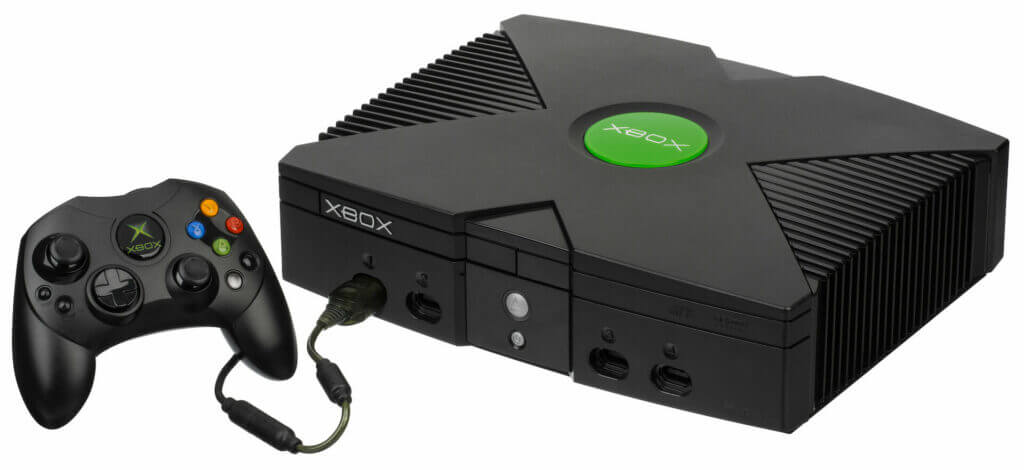
Xbox via Wikipedia(21)
Microsoft’s virgin console was unveiled—with Dwayne "The Rock" Johnson’s help—on November 15, 2001, at CES in Las Vegas. The new system had an 8GB HDD, Pentium 3 CPU clocked at 733 MHz, 64MB of RAM, and a 233 MHz GPU based on GeForce 3.
🕹 Gaming UX Trivia #12: Xbox was a noteworthy piece of technology but it was the Xbox Live that stole the show. Microsoft’s online gaming service launched on November 15, 2002, and let players compete in games like Unreal Championship and NBA 2K3.
Despite solid sales figures, Xbox wasn’t exactly a money-making machine and ended up costing Microsoft a whopping $4 billion in four years.
🔴 The Seventh Generation: Last In, First Out
Microsoft shoots for the moon. Sony shoots for the sun.
Ken Kutaragi, "The Father of the PlayStation"
Xbox 360 (2005)
With SEGA out of the battlefield and three major competitors left in the game, the next stage in the history of video game consoles started in 2005 with Microsoft’s Xbox 360.
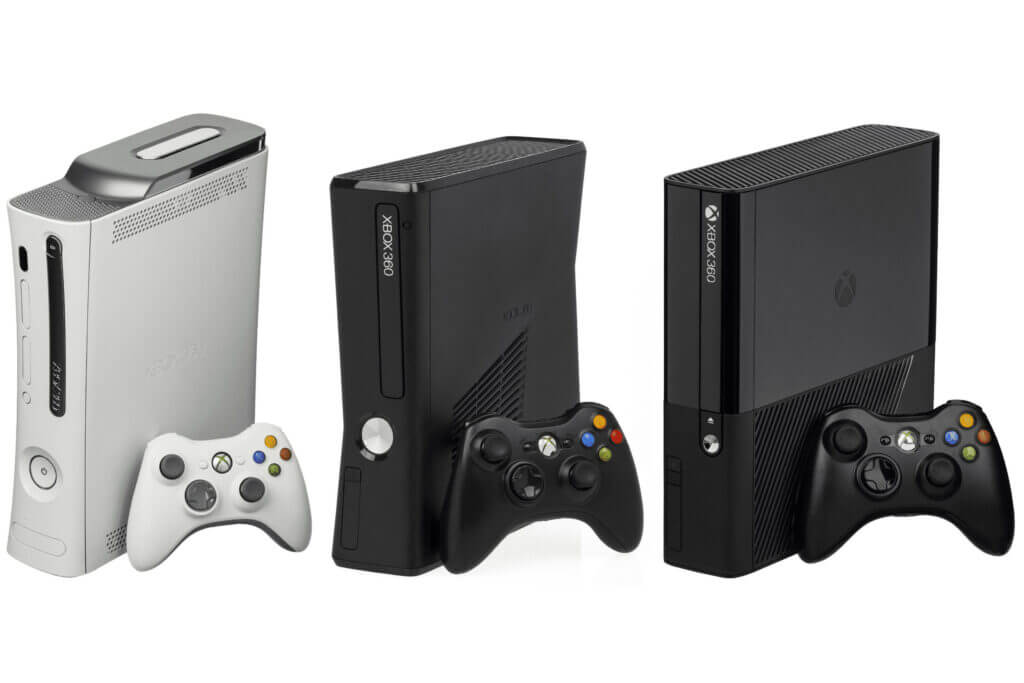
Xbox 360 lineup via LifeWife(22)
On the design/technical end, the console shipped with powerful IBM/ATI internals, much more elegant and ergonomic wireless controllers, matured Xbox Live service, upgradable HDD, and Wi-Fi connectivity.
🕹 Gaming UX Trivia #13: Five years after the launch of Xbox 360, Microsoft released Kinect, a groundbreaking motion sensor that enabled hands-free (literally) interactions with the device.
While Xbox 360 was a solid piece of hardware, but its launch proved became one of the biggest blunders in the history of video game consoles. Similarily to Playstation 3 one year later, Xbox 360 suffered from overheating problems that materialized as the infamous Red Ring of Death (RRoD).
Playstation 3 (2006)
After a series of setbacks, the third iteration of Sony’s flagship console went live in Japan on November 11, 2006, and six days later, on November 17, in the U.S.

The original Playstation 3 and a revised “Slim” version via Wikipedia(23)
Like its predecessor, PlayStation 3 featured online capabilities that could now take full advantage of the growing Playstation Network. Apart from the all-new motion-sensing controller, PS3 sported a blu-ray drive that helped market it as an entertainment center.
Interestingly enough, the early models—most notably the 20 and 60 GB versions for the Japanese market—included more USB ports, a flash memory card reader, Linux support (!), and hardware backward compatibility with Playstation 2.
Let’s take a short break, shall we? ⏱
🐑 Video Games x Taskade
Assembling teams, gathering resources, getting work done together… No, we’re not talking about another record-breaking MMORPG. ⚔️
Taskade is an all-in-one communication and collaboration platform that lets remote teams work, plan, and chat in real time.
🧠 Brainstorm ideas
📄 Manage projects
✅ Organize Tasks
📈 Track progress
🗓️ Schedule work
🎨 Create templates
And more…
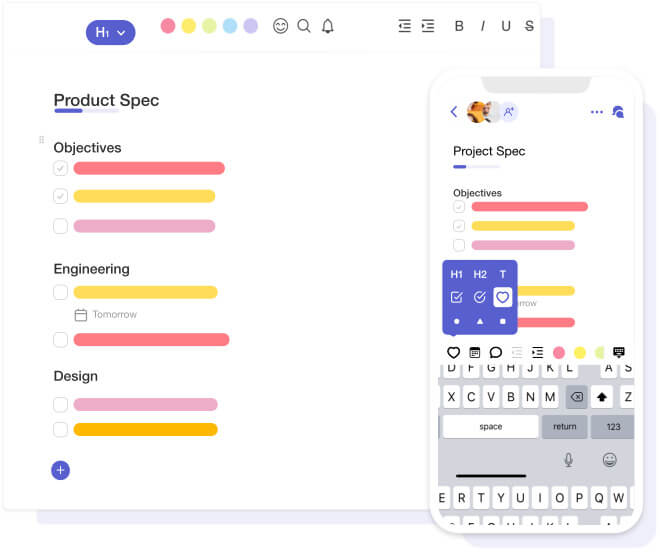
And just in case you missed it, our recent “Multiplayer” update added activity and status indicators so you always know what you’re teammates are up to!

Jump over here to sign up. It’s free! 👈
And now, back to our story...
Nintendo Wii (2006)
Nintendo Wii, the last and seemingly not-too-serious addition to the seventh generation made one thing clear: Nintendo backed off from the hardware game.
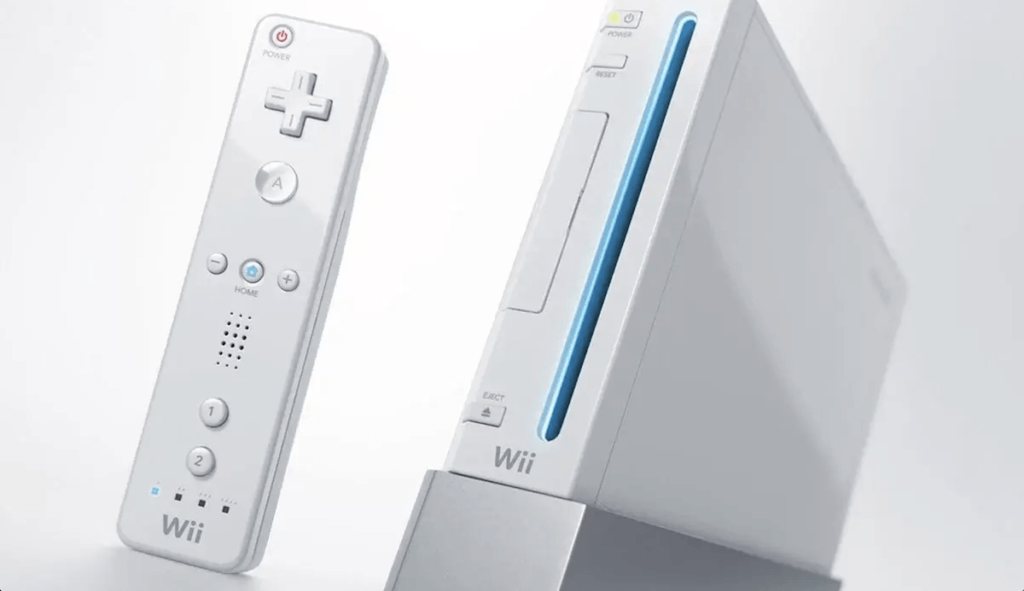
Nintendo Wii with a “Wiimote” controller via nintendolife(24)
On paper, Wii wasn’t the most impressive piece of hardware. It’s wee enclosure—see what we did there?—housed an IBM 729 MHz CPU, 243 MHz ATI GPU and meager 24 MB of RAM. Compared to the spec'd out PS3 and Xbox 360, it didn’t impress.
But Wii had a secret weapon up its disc slot—a sky-high “fun” factor:
“It wasn't the on-screen game action that moved these people; it was seeing how much fun people were having as they played. That was something new, and it blew away the old stereotype of lonely gamers huddled over a controller in a dark room.”
Scott Pelland, former Publications Director at Nintendo of America(25)
While the system had a fair share of “mature” games—The Legend of Zelda, Xenoblade, Metroid, and even Resident Evil—it built its heritage on casual, family-friendly productions like Wii Sports.
🕹 Gaming UX Trivia #14: The Wii Remote (a.k.a. Wiimote) and its little sibling the Nunchuk gave gaming UX a completely new twist. On top of motion-sensing capabilities, the controllers paired with countless weird add-ons, including a golf club, steering wheel, balance board, and… an inflatable racing kart (yep).

🐑 Conclusion
As the 8th Generation—led by Playstation 4, Xbox One and Nintendo Switch—is slowly wrapping up, we should all take a moment to appreciate how much the gaming industry and the user experience have changed over the last 50 years.
While many of the companies who blazed the trail and set the foundations for the gaming industry are no longer in the game, their heritage lives on. So, next time you pick up the controller and fire up a game, remember how it all started.
Till next time! 👊
* Release dates for Japan and the U.S.
Frequently Asked Questions About Video Game Console Designs
What are some innovative developments in the video game industry?
Innovative developments in the video game industry include virtual reality (VR) and augmented reality (AR), cloud gaming, artificial intelligence (AI) in game design, cross-platform play, and advanced graphics technologies such as ray tracing.
Is PlayStation an innovation?
Yes, PlayStation represents significant innovation in the gaming industry with each generation offering advanced hardware, exclusive game titles, and cutting-edge technology such as VR support with PlayStation VR.
What is innovation in game design?
Innovation in game design refers to the creation of new gameplay mechanics, storytelling techniques, and interactive experiences that push the boundaries of conventional gaming, often incorporating emerging technologies like AI, VR, and procedural generation.
How is Sony innovative?
Sony is innovative through its commitment to pushing technological boundaries, seen in the development of the PlayStation series, PlayStation VR, and its dedication to high-quality exclusive titles. Sony's advancements in graphics technology and its investment in AI and VR set it apart as a leader in gaming innovation.
How has the gaming industry improved?
The gaming industry has improved through technological advancements that have enhanced graphics, gameplay complexity, and multiplayer experiences. Innovations in hardware, game development tools, and online services have also contributed to more accessible, immersive, and engaging gaming experiences.
What is Xbox architecture?
Xbox architecture refers to the underlying hardware and software design of Xbox consoles, which include custom processors, high-speed SSDs, and advanced cooling systems. The architecture is designed to maximize performance, reduce latency, and enhance the overall gaming experience.
🔗 Resources
https://www.gamasutra.com/view/feature/6214/the_replay_interviews_ralph_baer.php?print=1
https://en.wikipedia.org/wiki/Magnavox_Odyssey#/media/File:Magnavox-Odyssey-Console-Set.jpg
https://commons.wikimedia.org/wiki/File:Intellivision_in_museum.jpg
http://www.atarimuseum.com/videogames/consoles/2600/atari2600.html
https://www.old-computers.com/museum/computer.asp?st=2&c=755
https://blog.gameoverbox.com/2019/07/which-nintendo-consoles-are-region.html
https://upload.wikimedia.org/wikipedia/commons/8/88/Sega-Master-System-Set.jpg
https://sega.fandom.com/wiki/Mega_Drive?file=RS39200+Megadrive.png
https://en.wikipedia.org/wiki/PlayStation_(console)#/media/File:PSX-Console-wController.jpg
https://www.playstation.com/en-gb/explore/ps4/playstation-through-the-years/
https://venturebeat.com/wp-content/uploads/2019/11/nintendo-64.jpg?w=1200&strip=all
https://commons.wikimedia.org/wiki/File:Dreamcast-Console-Set.jpg
https://www.denofgeek.com/games/how-the-gamecube-made-nintendo-cynical/
https://en.wikipedia.org/wiki/Xbox_(console)#/media/File:Xbox-console.jpg
https://simple.wikipedia.org/wiki/PlayStation_3#/media/File:PS3-Consoles-Set.jpg
https://www.nintendolife.com/news/2020/05/random_in_japan_you_can_buy_a_nintendo_wii_for_50_cents
https://www.gamasutra.com/blogs/ScottPelland/20091009/85687/A_Wii_Bit_of_History.php
https://www.amazon.com/Console-Wars-Nintendo-Defined-Generation/dp/0062276700